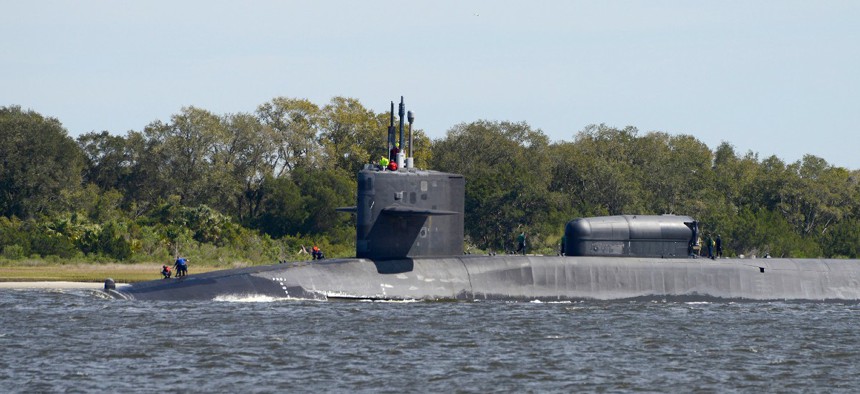Navy Working to Keep Subs and Destroyers From Becoming COVID-19 Hotspots

Ashley Berumen/Defense Department
Meanwhile, the coronavirus is putting the military health-care system under stress.
Social distancing is tricky on a submarine but the U.S. Navy says that they haven’t had a big problem with COVID-19 spreading aboard ships.
“We’ve only had a very small handful of cases,” Rear Adm. Bruce Gillingham, the service’s surgeon general, told reporters today via teleconference. “The Navy is ensuring that sailors who display COVID-19 symptoms are tested, isolated and treated in accordance with Navy and Marine Corps Public Health Center and CDC guidelines.”
Right now, the Navy can collect diagnostic samples from a shipboard sailors suspected of having COVID-19, but must send those samples ashore to a DOD lab for processing. While awaiting results, sailors are put into separate quarters.
“Navy medical professionals are working with industry to improve at-sea testing methods,” said Gillingham.
Fleet commanders instituted a policy several weeks ago that anyone coming aboard the ship would be “screened,” which is rather different from testing. “Those who appeared ill or who did not meet CDC criteria were not allowed aboard ship,” he said. As well, any ship that leaves a port won’t return to that port for at least 14 days.
“We have a protocol not only for any patient that would come aboard but also the crew,” he said. “Before the critical core reported today, they were all screened before they cross the brow of the ship.”
Fears that America’s destroyers and fast-attack subs would become gray-hulled versions of COVID-plagued cruise ships are, so far, not materializing. Every sailor so far with the disease has been found while the ship is in port, and immediately isolated, Gillingham said.
“We have not seen active transmission” at sea, where social distancing is happening “to the maximum extent possible,” he said.
The COVID-19 pandemic is affecting the military’s ability to treat active-duty personnel, their dependents, and veterans, Army Lt. Gen. Ronald Place, director of the Defense Health Agency told reporters.
Some 9.5 million people look to the Defense Health Agency for care in its 51 hospitals and 424 treatment clinics, Place said.
“Care in these facilities for our beneficiaries is being significantly affected by nation-wide response” he said. Normal beneficiaries were experiencing “stress, inconvenience and disruption to their healthcare,” as more and more staff are assigned to do clinical work. As in other hospitals, elective procedures are being postponed.
The Defense Department’s 15 testing labs may yet play a big role in evaluating tests done on civilians. So far, they’ve only tested about 1,000 samples, and just for DoD personnel. “We have the capability, if we had to...to do tens of thousands per day,” he said.






